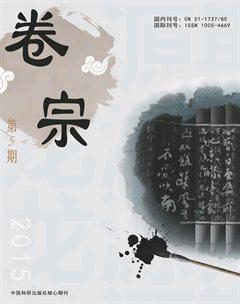The Art of Dress Writing in Washington Square
Huilian Zuo
(Beijing Language and Culture University Beijing 100000)
Abstract :This essay focuses on the transformation of color in Catherines dress in Washington Square by Henry James, arguing that the dress is bound with the spiritual growth of the heroine.
Key words: dress, Catherine, Washington Square, woman
注:“本文为北京语言大学研究生创新基金(中央高校基本科研业务费专项资金资助)项目成果,项目编号:14YCX149 ”
Henry James is a dedicated, prolific writer who deals profoundly with a great variety of women characters, about whom there exists many possible approaches; Nevertheless, whereas Jamess use of dress-imagery in Washington Square is always economical, interpreting the girls from the dress perspective has not been figured much in Jamesian criticism. Therefore, this essay focuses on the changing color notes in Catherines dress, hoping to unravel the language of the symbolic dress from an social meaning, and to see how Catherine achieves her spiritual growth.
The first time Catherine dressed in the striking red gown was in a dance party, a traditional stage for gorgeous gowns and romantic encounters, but for Catherine, at the age of twenty-one, at the first important party, she treated herself to “a red satin gown trimmed with a gold fringe (10)”, which makes her look like a woman of thirty. As Miss Oakey argued in her handbook on dress, “the first public appearance of a young girl demanded virginal white, and the extravagance of a red dress might represent the moral corruption of the girl.” (Oakey, 57) Thus, it is no wonder that people were all irritated at the sight of that dress. But for Catherine, its more than a way to show her fortune off, neither to attract young men, nor conforming to fashion; it is what Catherine, in all humility, believes to be an improved alternative to her dull, colorless and silent self, a brilliant daughter wishing to win her fathers approval. In her motherlessness, she knows nothing about the language of dress as well as her own identity.
As is noticeable, the following trip to Europe is more successful as an introduction of Catherine to the world than the party, although Slopers view towards her is still stereotyped as a commodity, and nor did Morris Townsend appreciate all improvements in Catherines appearance, when her financial expectation, unfortunately, is deceased on her return from Europe. But, clearly, Catherines indulgence in finery in Europe, as well as her gift to Mrs Penniman—a shawl on her return overseas says more about her self growth. Because around 1840, the ultimate genteel fashion accessory is the shawl, Catherines preference might stand for her consciousness of fashion as well as herself. Regardless of the mockery outside, Catherine has learnt the art of concealment in the same way a shawl disguises ones body figure.
In the end, Catherine, however, finally gets back to wear the virginal white frock, the one she failed to wear at her debut. Now, in her forties, she has become an authority “on all moral and social matters” (204), and with the denial of Morris second proposal, the social humiliation Catherine had 20 years before is not to be found. Her dress, which is appropriate to summer fashions and in accord with the rules of etiquette for an unmarried woman, signals the final stage of her self-articulation, for in the later years, she has already known that in the eyes of others she could only be defined by money.
As it is claimed by Madame Merle, in The Portrait of a Lady, that “A large part of my self is in the dresses I choose to wear” (253), clothing has a unique relationship with the human body, linking “the biological body to the social being, and pubic to private.” In the analysis of Catherines dress, clearly, the changing of clothing has been used as a means of expressing identity, a kind of recognition of power in designating social position, a way for the readers to understand the status of those who are wearing them.
Work Cited
Aindow, Rosy. Dress and Identity in British Literary Culture, 1870-1914. UK: MPG Books Group, 2010.
James, Henry. Notebook. New York: Scribners, 1962. 20-28.
James, Henry. Washington Square. Harmondsworth: Penguins Classic, 1986.c

